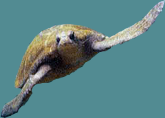Biopreserve Introduction
Biopreserves around the world are areas of terrestrial, coastal or marine ecosystems that are internationally recognized under UNESCO's intergovernmental research program Man and the Biosphere (MAB). These special areas are designed to have three primary functions:
- conservation: protect the genetic resources, species, ecosystems and landscapes
- development: foster sustainable economic and human development compatible with conservation
- logistic: facilitate demonstration projects, environmental education and training, research and monitoring in support of the above 2 functions
The fundamental aim of the preservation strategy is to incorporate the biopreserve as an integral part of the bio-regional landscape rather than sharply defined islands. Due to the complex nature of the human-nature interactions on the Galapagos, the only successful biopreserve will be one that opens conservation to the local people; that is, a carefully constructed structure that can involve the natives in the conservation effort as well as fulfill commitments made under international agreements. Such a harmony of local and international voices will improve the stability of the islands and greatly contribute in the conservation effort.
Copyright!
All rights reserved. Webmasters


